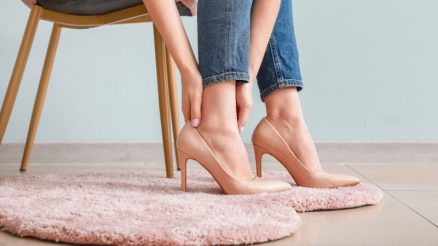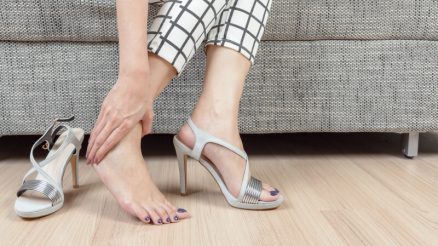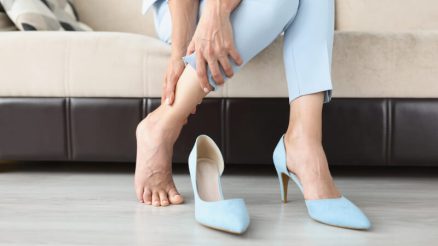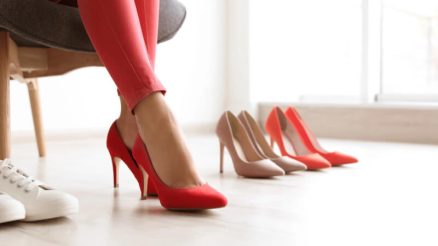For centuries, shoes have been more than just protection for our feet; they’ve been statements of style, status, and personal expression. Among the vast array of footwear options, two stand out as perennial contenders in the fashion ring: the elegant heel and the practical flat. But beyond their aesthetic appeal, a crucial question lingers for anyone concerned about their long-term foot health: Which is truly healthier for your feet?
It might seem like a straightforward answer, but the reality is more nuanced than a simple “heels bad, flats good.” Both have their pros and cons, and understanding them can empower you to make smarter choices for the well-being of your precious feet.
The Allure of Heels: A Walk on the High Side
High heels are undeniably captivating. They lengthen the legs, enhance posture (or at least, the perception of it), and can make any outfit feel more polished and glamorous. From towering stilettos to comfortable wedges, heels command attention and have been a staple in fashion for generations.
The Dark Side: When Style Comes at a Cost
Unfortunately, the aesthetic benefits of heels often come with a significant physiological price. When you wear high heels, your body weight is shifted unnaturally forward, placing immense pressure on the balls of your feet and toes. This unnatural alignment can lead to a cascade of problems:
- Foot Pain: The most immediate and common complaint. Increased pressure on the forefoot, nerve compression, and muscle strain are almost guaranteed with prolonged wear.
- Bunions and Hammertoes: The cramped toe box of many heels forces your toes into an unnatural, pointed position, contributing to the development or worsening of bunions (bony bumps at the base of the big toe) and hammertoes (a deformity that causes your toe to bend downward).
- Achilles Tendon Issues: Regular high heel wear can cause your Achilles tendon (the strong cord connecting your calf muscles to your heel bone) to shorten and tighten. When you switch to flats, this tightened tendon can stretch painfully, leading to inflammation (Achilles tendinitis) or even ruptures in severe cases.
- Back and Posture Problems: The forward lean induced by heels forces your lower back to arch excessively to maintain balance. This can strain your lumbar spine, lead to chronic lower back pain, and even affect your overall posture over time.
- Ankle Sprains: The elevated position and often narrow base of heels make ankle instability a significant risk, increasing your chances of painful sprains.
- Knee Pressure: The altered gait can also put additional, unnatural stress on your knee joints.
The Comfort of Flats: Grounded in Practicality
Flats are often hailed as the healthier alternative. They allow your feet to remain in a more natural, grounded position, distributing weight more evenly. From ballet flats and sneakers to sandals and loafers, they offer versatility and, ostensibly, comfort.
The Hidden Pitfalls: Not All Flats Are Created Equal
While generally better than high heels, not all flats are foot-friendly. The assumption that “flat equals healthy” can be misleading. Many popular flat styles lack crucial support features, leading to their own set of problems:
- Lack of Arch Support: Many ballet flats, canvas sneakers, and cheap sandals offer virtually no arch support. This can cause your foot to pronate (roll inward excessively), straining the plantar fascia (the band of tissue running along the bottom of your foot) and leading to:
- Plantar Fasciitis: A common and often debilitating condition characterized by stabbing heel pain, especially with the first steps in the morning.
- Arch Strain: Chronic aching or pain in the arch of the foot.
- Lack of Cushioning: Thin-soled flats offer minimal shock absorption, meaning every step sends impact directly up your legs and spine. This can contribute to:
- Shin Splints: Pain along the shin bone.
- Knee and Hip Pain: Increased impact can exacerbate issues in these joints.
- Stress Fractures: In severe cases, particularly for active individuals.
- Lack of Stability: Some flimsy flats offer little lateral stability, making your feet more susceptible to twisting or sliding within the shoe.
- Exposure to Elements: Open-toed flats or sandals can leave your feet vulnerable to cuts, scrapes, and infections, especially in urban environments.
The Verdict: It’s Not Black and White
So, which is healthier? The answer isn’t a simple choice between two extremes. Neither high heels nor flimsy, unsupportive flats are ideal for long-term foot health.
The healthiest footwear strikes a balance: it supports your foot’s natural anatomy, provides adequate cushioning, and distributes pressure evenly without forcing your foot into an unnatural position.
Finding Your Foot’s Happy Medium
The goal isn’t to banish heels or flats entirely, but to make informed choices that prioritize your foot health. Here’s how to find your happy medium:
- Alternate Your Footwear: Don’t wear the same type of shoe every day. If you love heels, wear them for shorter periods and special occasions, not for daily commutes. Rotate with supportive flats, sneakers, or low-heeled options.
- Choose Wisely:
- For Heels: Opt for lower, wider heels (2 inches or less) with a broader toe box that doesn’t pinch your toes. Wedges and block heels offer more stability than stilettos.
- For Flats: Look for flats with good arch support, adequate cushioning, and a slightly thicker, more supportive sole. Many stylish sneakers and loafers now incorporate excellent ergonomic design.
- Consider Insoles/Orthotics: If your favorite shoes lack support, a good quality insole or custom orthotics can make a world of difference, providing the necessary arch support and cushioning.
- Stretch Regularly: If you do wear heels, make sure to stretch your calf muscles and Achilles tendon regularly to counteract shortening.
- Listen to Your Body: Pay attention to pain. Foot pain is your body’s way of telling you something is wrong. Don’t ignore it! Persistent pain should always prompt a visit to a podiatrist.
- Prioritize Function Over Fashion (Sometimes): While fashion is fun, your feet are your foundation. Invest in good-quality, supportive footwear for your everyday activities, and save the more challenging styles for when they truly matter.
Conclusion
The debate between heels and flats isn’t about declaring an outright winner but understanding their impact on your feet. Both can be detrimental if chosen poorly or worn excessively. The key to healthy feet lies in moderation, thoughtful selection, and a commitment to providing your feet with the support and care they deserve. Your feet carry you through life, so treat them well!








